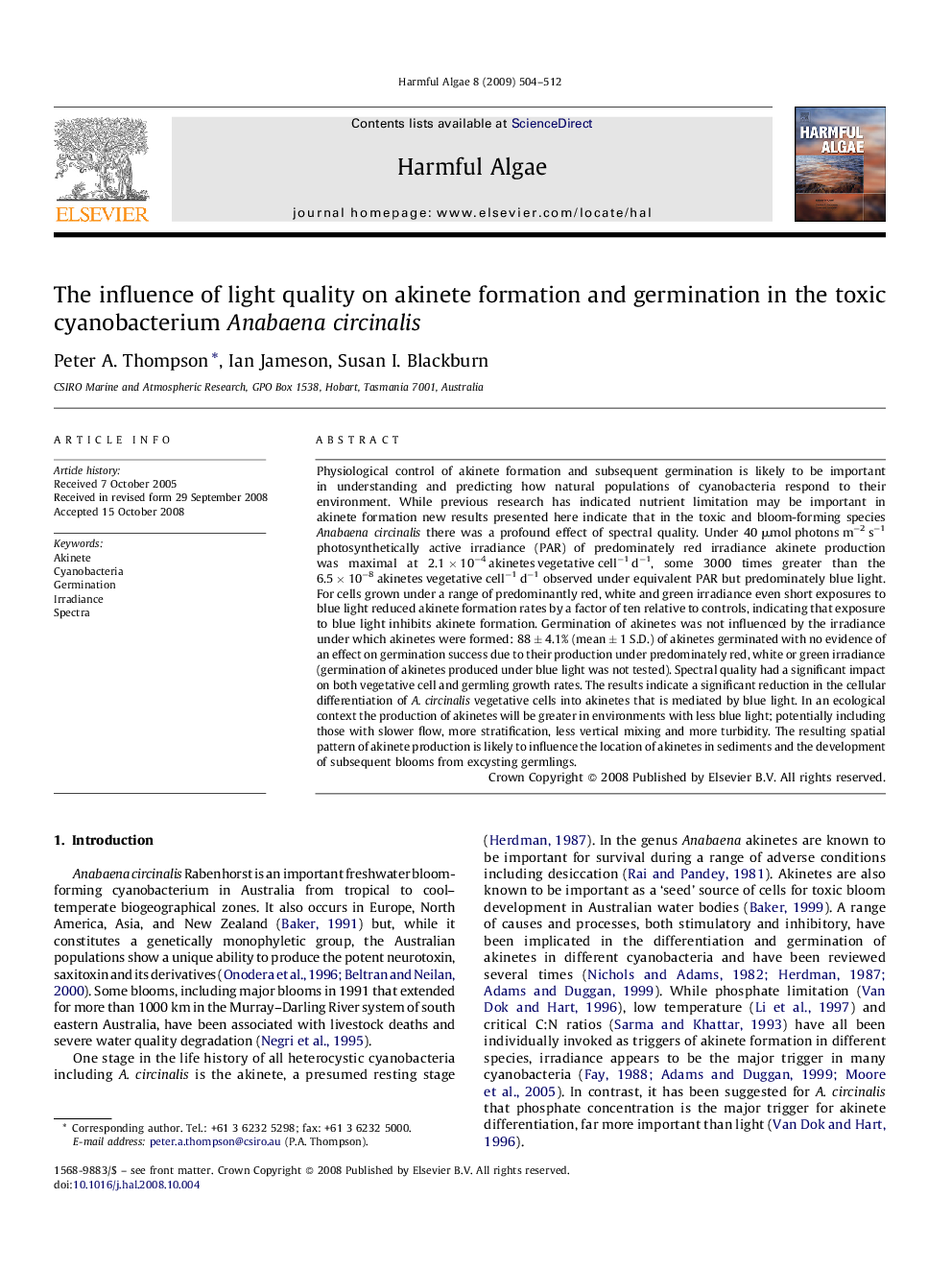| Article ID | Journal | Published Year | Pages | File Type |
|---|---|---|---|---|
| 4545825 | Harmful Algae | 2009 | 9 Pages |
Physiological control of akinete formation and subsequent germination is likely to be important in understanding and predicting how natural populations of cyanobacteria respond to their environment. While previous research has indicated nutrient limitation may be important in akinete formation new results presented here indicate that in the toxic and bloom-forming species Anabaena circinalis there was a profound effect of spectral quality. Under 40 μmol photons m−2 s−1 photosynthetically active irradiance (PAR) of predominately red irradiance akinete production was maximal at 2.1 × 10−4 akinetes vegetative cell−1 d−1, some 3000 times greater than the 6.5 × 10−8 akinetes vegetative cell−1 d−1 observed under equivalent PAR but predominately blue light. For cells grown under a range of predominantly red, white and green irradiance even short exposures to blue light reduced akinete formation rates by a factor of ten relative to controls, indicating that exposure to blue light inhibits akinete formation. Germination of akinetes was not influenced by the irradiance under which akinetes were formed: 88 ± 4.1% (mean ± 1 S.D.) of akinetes germinated with no evidence of an effect on germination success due to their production under predominately red, white or green irradiance (germination of akinetes produced under blue light was not tested). Spectral quality had a significant impact on both vegetative cell and germling growth rates. The results indicate a significant reduction in the cellular differentiation of A. circinalis vegetative cells into akinetes that is mediated by blue light. In an ecological context the production of akinetes will be greater in environments with less blue light; potentially including those with slower flow, more stratification, less vertical mixing and more turbidity. The resulting spatial pattern of akinete production is likely to influence the location of akinetes in sediments and the development of subsequent blooms from excysting germlings.
